BROOKLINE, MA – It’s almost as if the Larz Anderson Auto Museum planned a rodeo rather than an exhibition of vintage motorcycles and then forgot to put on the show; keeping the livestock in a corral instead of showcasing them in an arena. Yes, the museum  has herded up more than 70 gas-powered steeds, many of them magnificent, but it has crammed them together in a stockyards manner. The result is an embarrassing display that disrespects their heritage and uniqueness. Getting shortchanged in the process are the spectators who are paying to see them.
has herded up more than 70 gas-powered steeds, many of them magnificent, but it has crammed them together in a stockyards manner. The result is an embarrassing display that disrespects their heritage and uniqueness. Getting shortchanged in the process are the spectators who are paying to see them.
The ongoing exhibit is dubbed “Beauty of the Beast – Motorcycles: Art, Form, Function, Freedom.” The title’s a misnomer. The exhibit isn’t functional and there’s no freedom to see most of the bikes in a manner that allows any close up scrutinizing – unless you consider staring at a morass of dimly-lighted, tightly-packed metal worth the price of admission.
1948 Vincent Black Shadow
RIDE-CT & RIDE-NewEngland visited the museum on Thursday in what was as disappointing of a day trip as I can remember – due solely to the dust-covered presentation. Make no mistake, Larz Anderson has secured some wonderful bikes. There’s a 1948 Vincent Black Shadow (shown above), one of only 1,700 ever built; a Brough Superior; and a 1924 BMW R32. There are also long-vanished brands like Douglas and Emblem and one-off efforts like a Drysdale Bruiser from Australia and a 1976 Hercules with its Wankel engine.
The R32 was the first motorcycle produced by BMW. The company built 3,000 between the fall of 1923 and 1926. Only 40 exist today. Why would you want to hide it? Yet that’s what the Larz Anderson folks have done, tucking it face-forward in a faraway line of old BMWs and with no convenient signage or information on the bike’s rarity. It might as well be in Stuttgart.
BMW R26, BMW R17 and BMW R32
The more than 85-year-old museum – home to “America’s Oldest Car Collection” – has an annual European Motorcycle Day that attracts thousands every summer. Because of this, I figured – wrongly, as it turned out – that the museum would have a tip-top display. Instead, I found bikes almost haphazardly jammed together and gobs of wasted space that could have been put to good use.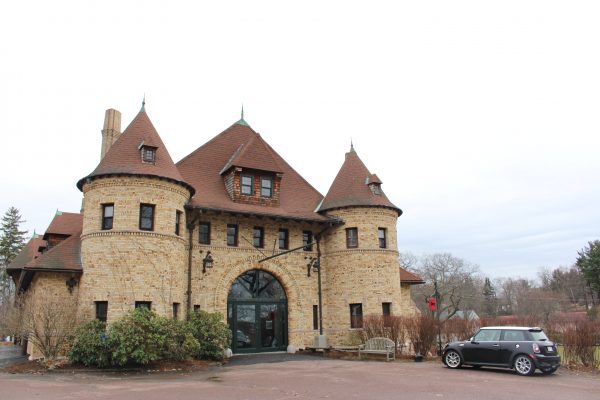
The expansive main gallery inside the entrance (shown above) had but two bikes as a centerpiece, one of them a modern Ducati 1299 Panigale and the other a 1912 Flying Merkel board track racer (shown below). The Flying Merkel has short exhaust pipes. Is this where slash cuts originated?
Why the remainder of the vast space was left vacant when it could have been used to showcase other special bikes, allowing patrons to walk around them and witness them from every angle, can only be speculated upon. Not enough stanchions and rope to keep fingers from touching them?
1912 Flying Merkel
The motorcycles are adequately grouped by age, brand, area of origin and style. The walk-through began just inside the entrance where the oldest bikes are tucked to the left. Included in the cluster are a 1922 Douglas, a 1912 Emblem board track racer, a 1924 BSA Roundtank (listed as a 1924 BSA “Roundtake” in handout literature) and a 1920 Indian Powerplus with sidecar.
Next comes the rather eye-catching title board with a 1939 Crocker, 1936 Harley-Davidson (misspelled “Harely Davidson” on the museum’s sloppy website) Knucklehead, 1946 Indian Chief and 1970 Harley-Davidson Streamliner in front of the mural.
Across the room is another tight grouping that includes the Drysdale, the Hercules, a Morbidelli and a Rokon.
Drysdale Bruiser
In the rear gallery there is likewise loads of unoccupied floor space, the focal model here being a 1928 Indian 101 Scout “Wall of Death” bike.
1928 Indian 101 Scout
The major problem in this area was lighting, or lack thereof. Motion sensors activated some overhead spotlights, but portions of this gallery were dim. A 1972 Moto Guzzi Eldorado – which the museum incorrectly identifies as an “El Dorado” – was tucked in a corner and virtually in the dark.
1972 Moto Guzzi Eldorado
Equally irritating from a photographic standpoint was small side room filled with two-stroke Yamaha TZ race bikes from 1979 and 1980. The problem in this area was harsh backlighting that made getting a good picture impossible. Why didn’t the museum anticipate that motorcycle enthusiasts would want to take pictures of the bikes on display, and from all angles, and position and light them appropriately?
Yamaha TZ models
Another shortcoming on the show is a lack of information material on the individual motorcycles. Card stands scattered throughout the show list the vital statistics of the bikes, and refer visitors to the museum’s website for more info, but what’s really needed are comprehensive informational cards providing model history and anecdotal news on each. And they need to be positioned adjacent to each. Of course, given the congested layout and lack of close contact to the bikes, not having them really didn’t matter.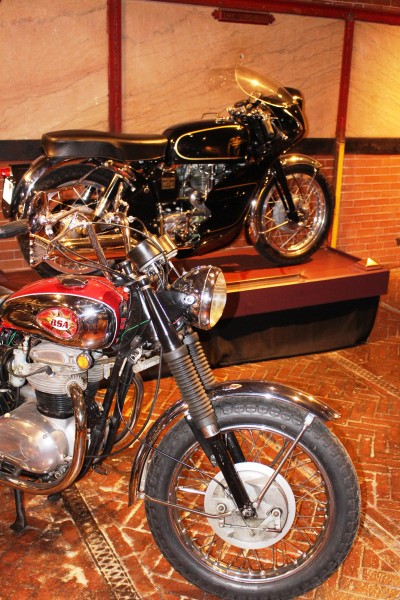
Maybe excessive concern that these bikes might be damaged or that those who loaned them might get ticked if something untoward happened prevented the Larz Anderson Auto Museum from curating a more rider-friendly show. Having visited numerous other museums that have done superlative jobs in making motorcycles accessible yet safe, I came away from the Larz Anderson Auto Museum feeling insulted – as if riders cannot be trusted – and infuriated.
In actuality, the motorcycle enthusiasts who are apt to visit a show such as this would certainly be more careful and protective of the exhibits than the average museum-goer. And they’re anxious for accurate, comprehensive information. You would think a museum would strive for accuracy, but Larz Anderson’s effort is sloppy and shoddy.
Other examples? The BMW R17 is listed as a 1935 in literature and as a 1937 on the website. The centerpiece Ducati is listed as an 1199 Panigale on the website and in the literature but is actually a 1299 Panigale. It’s obvious that Larz Anderson doesn’t know or particularly care about motorcycles.
The Larz Anderson Auto Museum is open Tuesday through Sunday from 10 a.m. to 4 p.m. Admission is $10 for adults, and $5 for military, seniors, students and children 6-12. The museum’s website says “Beauty of the Beast” runs through May, while the cashier said in only runs until April. Who knows and who cares…
 Ride CT & Ride New England Serving New England, NYC and The Hudson Valley!
Ride CT & Ride New England Serving New England, NYC and The Hudson Valley!


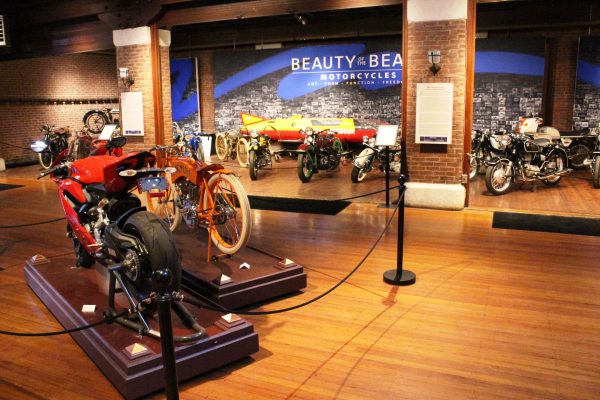
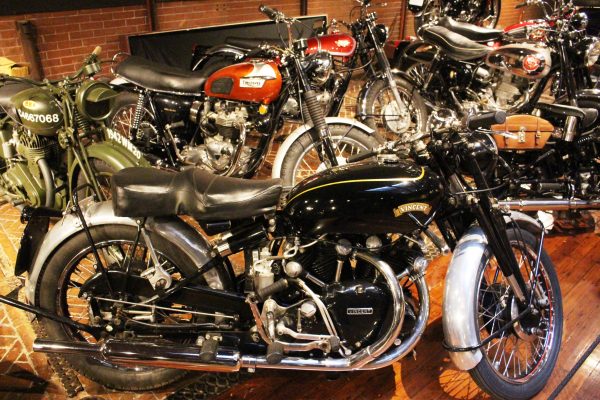
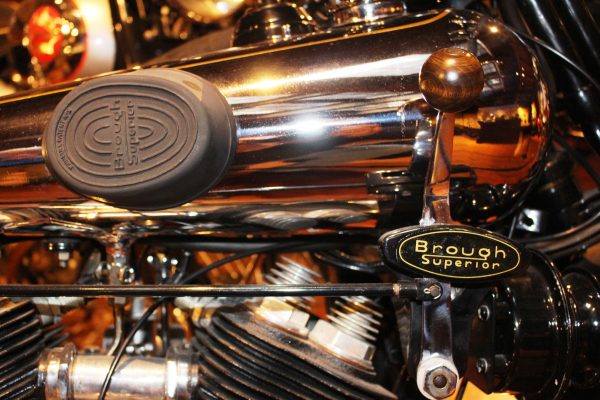
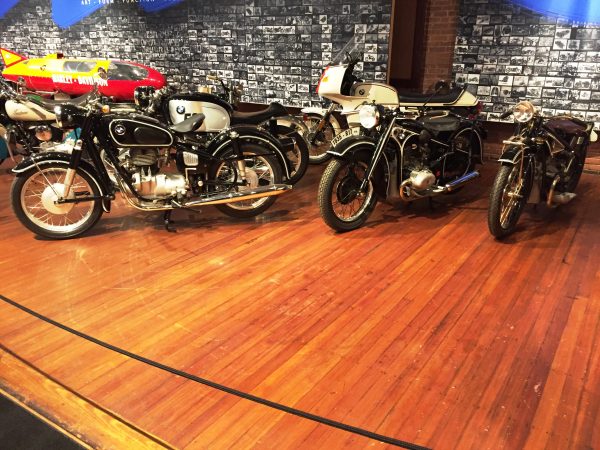
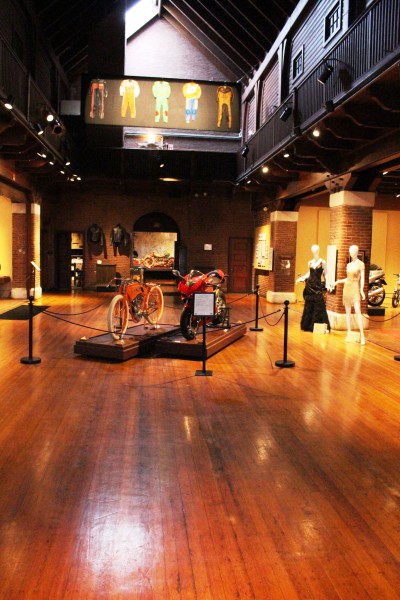
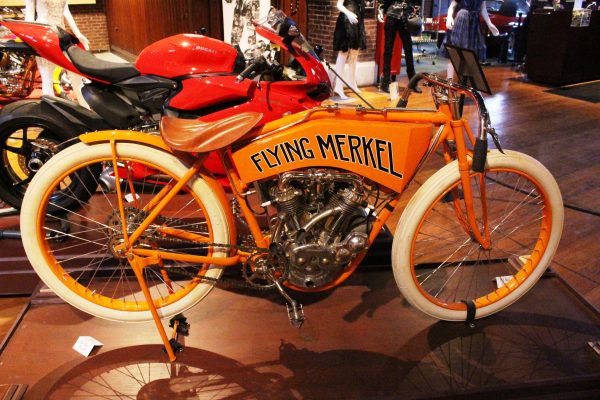
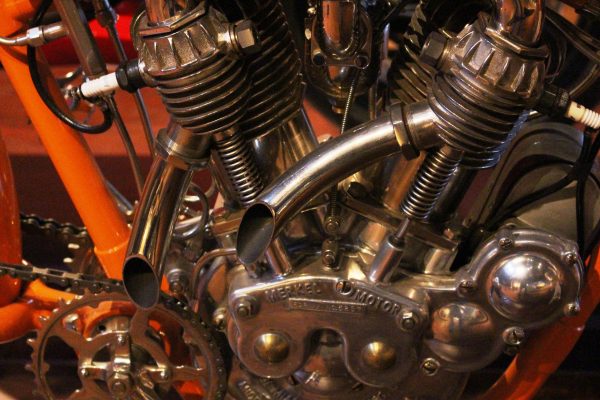
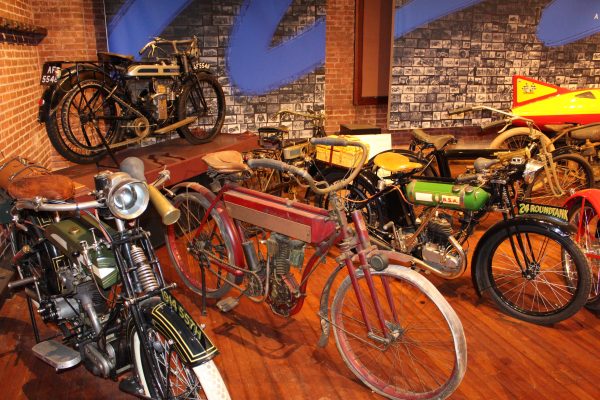
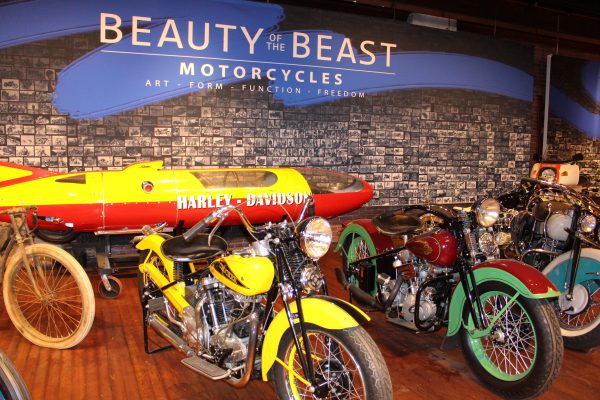
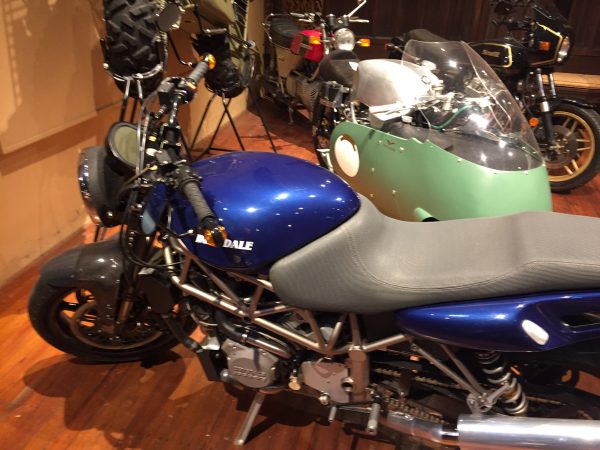
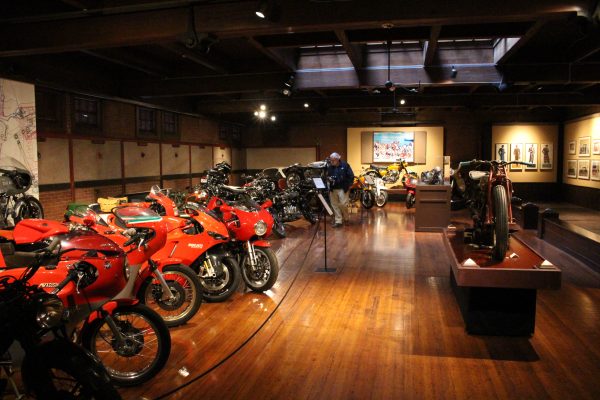
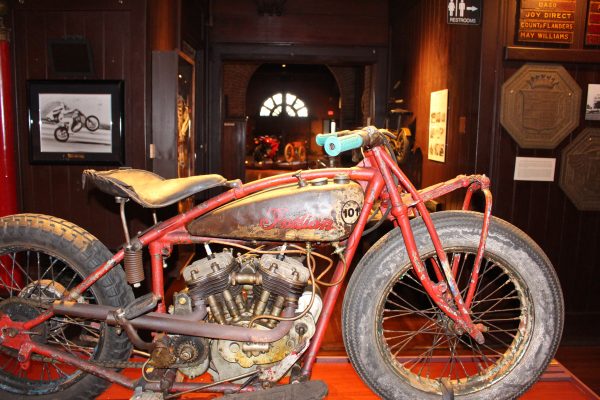
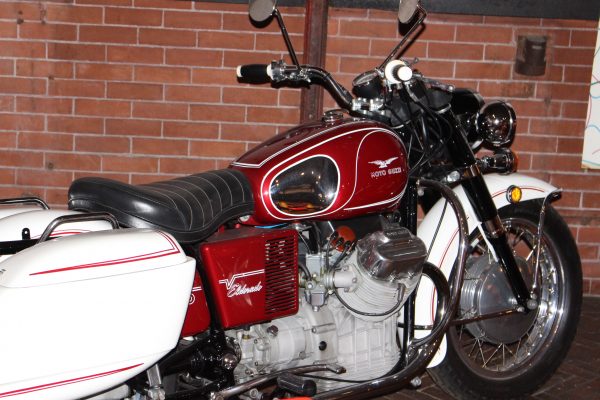
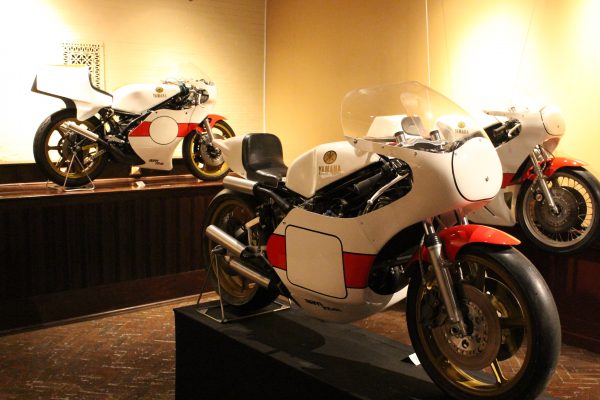
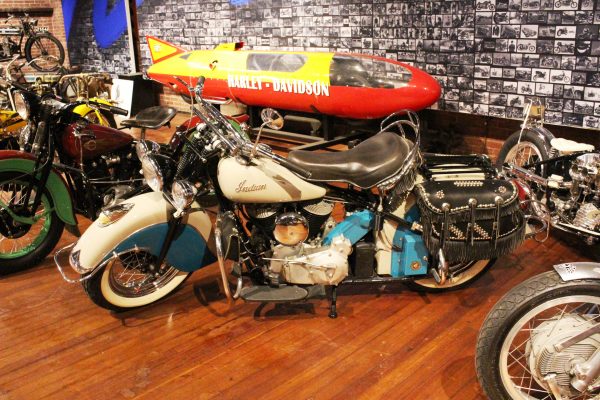

Thanks for the great write up as always. Those are some great looking motorbikes in the pictures. Too bad they haven’t gone the extra step to make it a great exhibit. What an impressive list of motorbikes all in one place though. For $10 to check it out, that’s not so bad.
Well, you were there and I was not, and we all have off days, but… It would not bother me to see that Drysdale V-8, dusty on not. Wouldn’t we all like to have more bikes than space. Just my .02 cents.